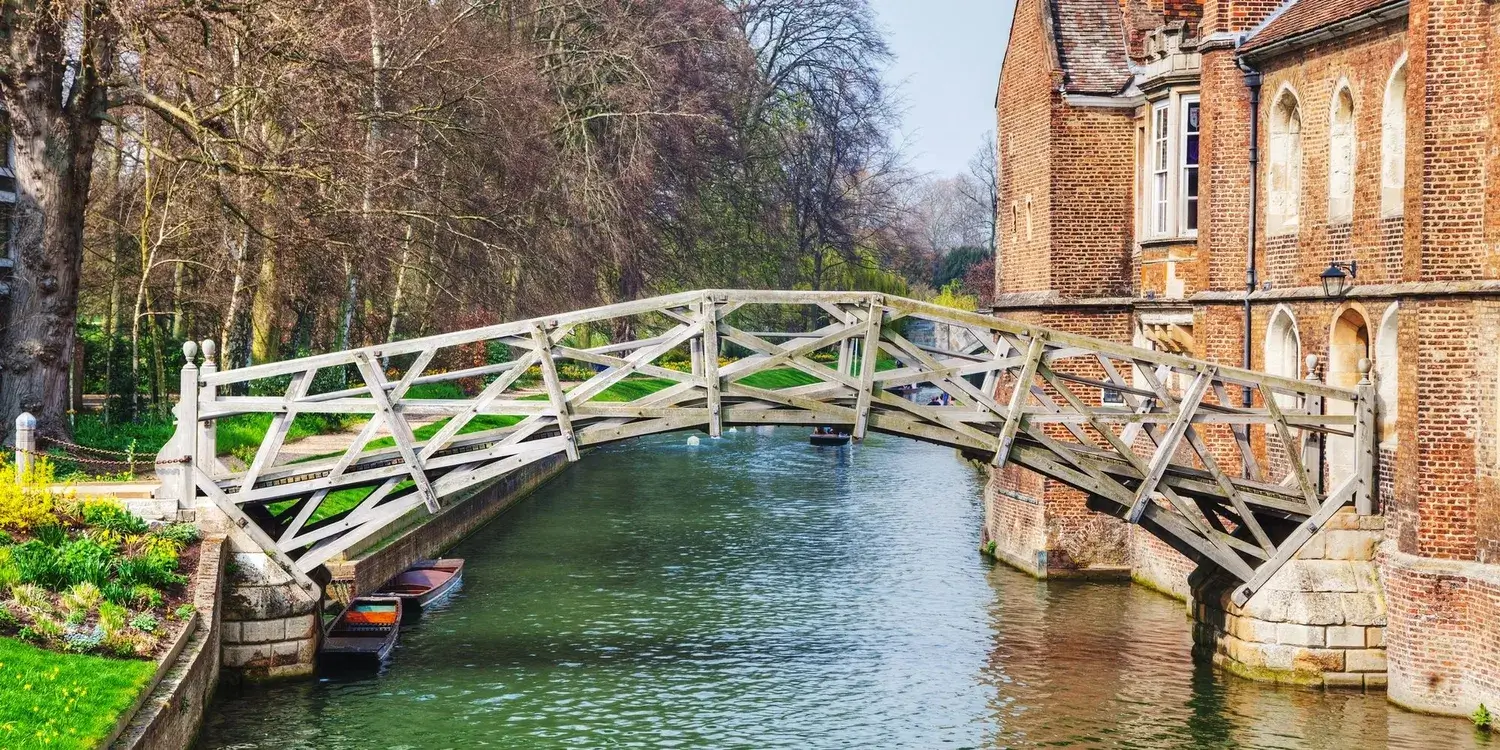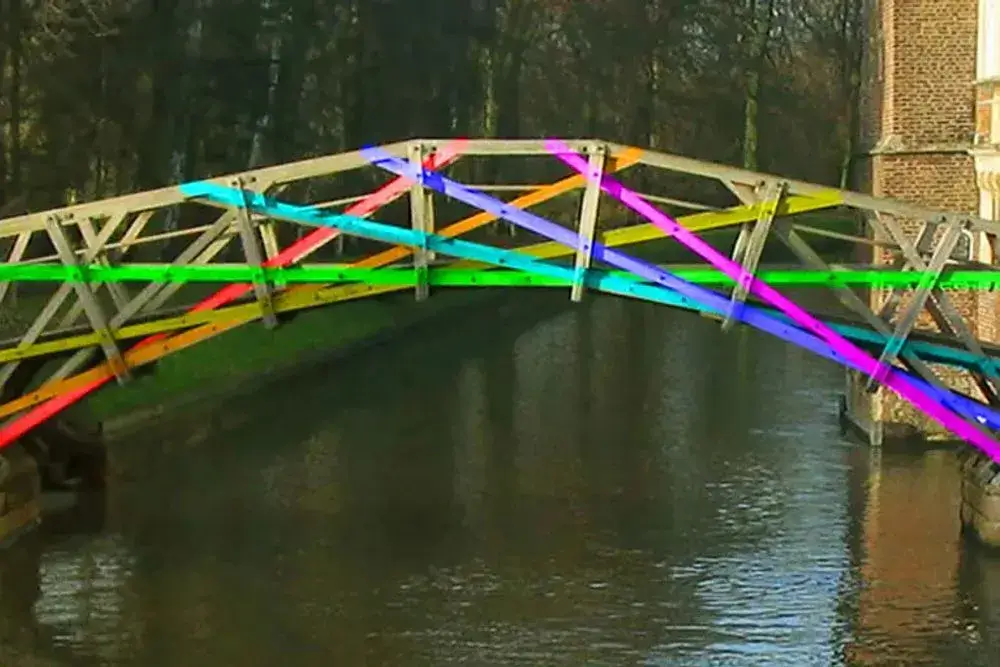The Mathematical Bridge

Punting Sights – The Mathematical Bridge
The most recognised bridge on The Backs in Cambridge; The Queens’ College Mathematical Bridge is famed as an example of a perfect bridge – at least in engineering terms.
The poetically recognised ‘Mathematical Bridge’ does not have an official name and is also known as ‘The Wooden Bridge’ or ‘Queens’ Bridge.’
The bridge’s pen name, ‘The Mathematical Bridge,’ did not appear in literature until at least 1803.*
Since its original construction in 1749, a version of the bridge has connected one side of Queens College to the other.
The ‘Riverside Structure,’ which it links from on one side, is the oldest building (circa 1460) on The Backs in Cambridge. Parts of the President’s Lodge are housed in this structure.
The bridge was designed by master carpenter William Etheridge and built by James Essex, a local builder.
*It’s also worth mentioning that in 1803 there was some misunderstanding over which ‘Mathematical Bridge’ was being referred to, as James Essex built a second bridge in a very similar design between Trinity College and Trinity Hall on the site of the modern-day Garrett Hostel Bridge.
The bridge is so popular and well-known that the team at Rutherford’s Punting include it in our private and shared punting tours. Keep reading for more information.
The Mathematical Bridge Design
The Mathematical Bridge is a fine example of tangent and radial trussing design, yet it’s not as complicated as its name suggests.
The key thing to note is that the bridge creates a curvature while being constructed completely of straight beams.
On the bridge, there are just two types of load-bearing beams. The tangential beams, which are emphasised in the image below, and the radial beams, which run at regular intervals from the top of the bridge to the bottom.

The initial advantage of this design was that individual timbers could be changed without disassembling the bridge, in theory.
The clever thing about the bridge is that the tension and compression forces (which exist on every bridge or arched structure) are basically limited to the two types of beams.
The tangential timbers are nearly fully compressed, but the radial beams are almost entirely tensioned, with almost little ‘bending’ stress.
In other words, the Mathematical Bridge is virtually flawless in terms of design.
William Etheridge
William Etheridge comes from a long tradition of skilled carpenters who lived in neighbouring Suffolk.
From 1738 until 1749, William was involved in the construction of the first bridge across the Thames at Westminster. Etheridge first served as the project’s foreman before taking over as project manager following the death of the building’s legendary designer, James King.
The concept of tangent and radial trussing is a victory of 18th-century engineering that can be directly traced to James King.
Etheridge employed James King’s concepts throughout his bridge-building career.
Etheridge was commissioned by Queens College to design a bridge to span the Cam when the Westminster Bridge was completed, as part of a larger three-arch project called the ‘Walton Bridge’ over the Thames in Surrey.
The bridge replica at Queens College is said to represent Etheridge’s original design. It depicts a single arch crossing with trusses and bolts.
According to Queens College records, he was awarded a handsome fee of £21.00 for his design.
James Essex, The Younger
Coming with a strong family reputation for build quality, construction work fell naturally to master carpenter James Essex, The Younger.
The Essexes were well-known at the University for the exceptional quality of their work.
The Wooden Bridge, also known as Queens’ Bridge, is the first recorded structure built entirely by James Essex, The Younger. Needless to say, the bridge’s construction greatly increased James Essex’s standing within the University.
So much so that the younger James Essex was commissioned in 1756 to design and construct a new structure for Queens College. If you’ve ever been on the river, you’ve probably seen The Essex Building, which was named for its designer.
Metamorphosis of the Mathematical Bridge
The Mathematical Bridge has inevitably been vulnerable to challenges created by the choice of building material – wood – throughout time.
Typical difficulties began to emerge as a result of persistent dampness and the resulting deterioration, as well as swelling and shrinking. After just 17 years, the original oak timber structure began to deteriorate and had to be restored (1866), before being totally rebuilt in 1905. Mr William Sindall, a local builder, was entrusted with and finished the reconstruction work.
The rebuild stayed true to the original design, just changing the wood and bolt types.
The principal alterations were the replacement of oak timbers with teak timbers and the use of coach bolts that passed through each joint.
What about William Sindall’s local building company? As part of the ‘Morgan Sindall Group,’ it went on to become one of the most recognised brands in the UK construction sector. It is now listed on the London Stock Exchange and employs 6,600 people in the United Kingdom (2018).
The handrail on the bridge, which was built to enable the Queen Mother’s frequent journeys to the College, is the principal difference between the original design and the bridge today.


